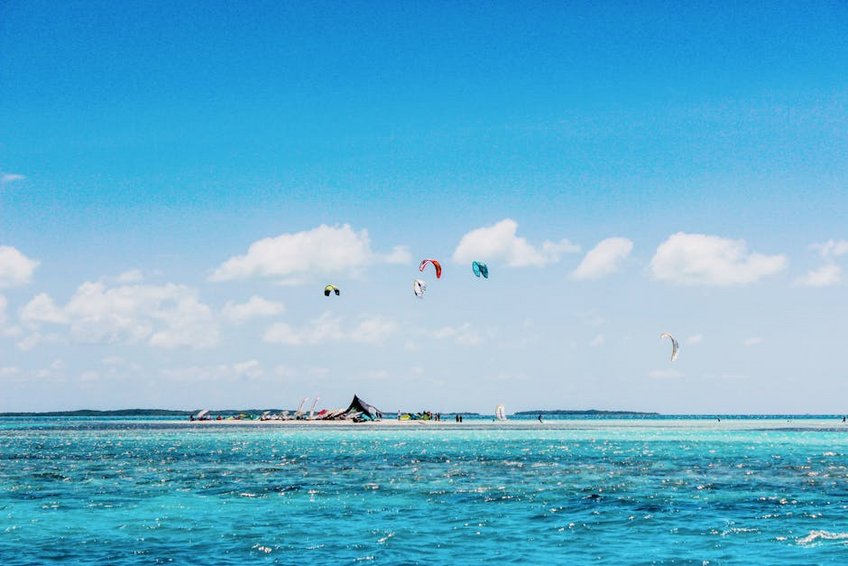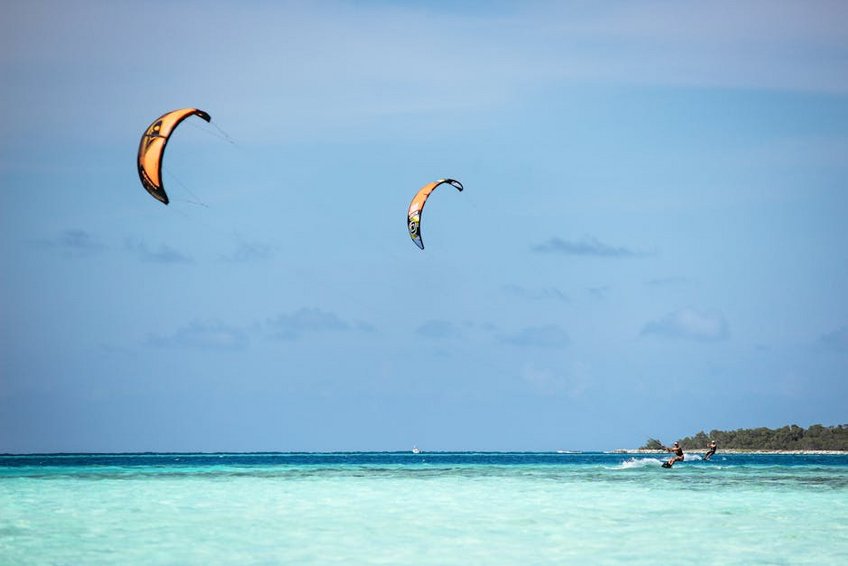Venezuela Los Roques Archipelago: Your Ultimate Tropical Paradise Guide
Imagine stepping onto powdery white sands where turquoise waters stretch to the horizon and vibrant coral reefs teem with marine life—this is the Venezuela Los Roques Archipelago, a breathtaking Caribbean gem that feels like a world away from the hustle of modern life. As one of Venezuela’s most pristine national parks, this stunning collection of over 350 islands and cays offers an unparalleled escape for nature lovers, beach enthusiasts, and adventure seekers alike. You’ll find yourself mesmerized by the untouched beauty of Los Roques, where the only sounds are the gentle lapping of waves and the distant calls of seabirds. From world-class snorkeling in crystal-clear lagoons to relaxing on secluded beaches that rival any postcard image, this destination promises memories that will last a lifetime. Whether you’re planning a romantic getaway, a family vacation, or a solo adventure, the Venezuela Los Roques Archipelago delivers an authentic tropical experience that’s both luxurious and eco-friendly. I’ve explored countless Caribbean destinations, but the sheer scale and preservation of Los Roques make it truly special, offering a perfect blend of relaxation and exploration that caters to all types of travelers. Getting here might require some planning, but trust me, the reward is worth every moment of preparation as you immerse yourself in this paradise.
Venezuela Los Roques Archipelago – Essential Information
Located about 80 miles north of Caracas in the Caribbean Sea, the Venezuela Los Roques Archipelago spans approximately 1,500 square miles and functions as a national park established in 1972 to protect its delicate ecosystems. You’ll discover that the main island, Gran Roque, serves as the gateway and only inhabited spot, where colorful houses and a small village welcome visitors with local charm. The archipelago’s geography features shallow turquoise lagoons, extensive coral reefs, and mangrove forests that support diverse wildlife, including sea turtles, dolphins, and over 280 bird species. Historically, Los Roques was once a base for pearl diving and piracy before becoming a protected area, and today it’s managed with strict environmental regulations to preserve its natural beauty. Visiting here means respecting these rules—like no fishing in certain zones and limited development—which helps maintain the pristine conditions that make it so magical. As a traveler, you’ll appreciate the balance between accessibility and conservation, ensuring that future generations can enjoy this paradise just as you do.
Location and Geography – What You Need to Know
- The archipelago lies in the Caribbean Sea, directly north of Venezuela’s mainland, with coordinates around 11°51′N 66°45′W, making it easily accessible by air from Caracas or other major cities.
- It consists of around 350 islands, cays, and sandbars, with Gran Roque as the main hub, featuring a landing strip, guesthouses, and basic amenities while the outer islands remain largely uninhabited and wild.
- The terrain includes coral atolls, white-sand beaches, and shallow waters ideal for wading, with depths rarely exceeding 15 feet in the lagoons, perfect for snorkeling and kayaking adventures.
- Budget travelers can expect to spend around $50-100 USD per day by staying in basic posadas (guesthouses), using shared facilities, and preparing some meals, with day tours costing $30-50 USD per person.
- Mid-range options include comfortable posadas with private bathrooms and meals included, averaging $100-200 USD daily, plus guided excursions to multiple cays for snorkeling or fishing.
- Luxury experiences might involve private boat charters, upscale lodging with ocean views, and gourmet dining, reaching $300-500 USD or more per day for all-inclusive packages.
- Venezuela National Tourism Institute
- Lonely Planet Los Roques Guide
History and Significance – Key Details
Dating back to indigenous Arawak settlements, the Venezuela Los Roques Archipelago has a rich history intertwined with Spanish colonization, when it became a center for salt extraction and later pearl diving. In the 20th century, it gained protection as a national park, highlighting its ecological importance as a breeding ground for seabirds and marine species. Today, it’s recognized internationally for its biodiversity, with efforts focused on sustainable tourism that benefits local communities. As you explore, you’ll notice the lack of large resorts, which preserves the area’s authenticity and allows you to connect with nature in a way that’s increasingly rare in the Caribbean.
Venezuela Los Roques Archipelago – Planning Your Trip
Planning your visit to the Venezuela Los Roques Archipelago requires attention to seasonal patterns, budget considerations, and logistical details to ensure a smooth and enjoyable experience. You’ll want to book flights and accommodations well in advance, especially during peak seasons, as options on Gran Roque are limited and fill up quickly. I recommend allocating at least 4-5 days to fully appreciate the islands, allowing time for day trips to outer cays, water activities, and simply relaxing on the beach. Keep in mind that infrastructure is basic—think solar power and limited Wi-Fi—which adds to the charm but means you should pack essentials like sunscreen, insect repellent, and cash in Venezuelan bolívars or USD for small purchases. Engaging with local tour operators on Gran Roque can enhance your trip with guided excursions to hidden spots, and always check current travel advisories for Venezuela to stay informed about safety and entry requirements. With careful planning, your journey to Los Roques will be a seamless adventure into paradise.
Best Time to Visit Los Roques Archipelago
The ideal time to explore the Venezuela Los Roques Archipelago is during the dry season from December to April, when you’ll enjoy sunny days, minimal rainfall, and calm seas perfect for snorkeling and boating. Temperatures average 80-85°F (27-29°C), with low humidity and steady trade winds providing comfortable conditions for outdoor activities. If you visit between May and November, be prepared for occasional rain showers and higher humidity, though this off-season period offers fewer crowds and potentially lower prices. Whale watching peaks from February to March, while bird nesting seasons in summer add extra wildlife viewing opportunities. For the best balance of weather and affordability, consider late April or early December, when you can avoid the peak tourist rush while still basking in excellent conditions.
Budget Planning and Costs
Essential Preparation Checklist
Before heading to the Venezuela Los Roques Archipelago, ensure you have a valid passport with at least six months’ validity and check if you need a tourist visa—most Western passport holders, including Americans and Europeans, can enter Venezuela visa-free for up to 90 days. Pack light, breathable clothing, swimwear, reef-safe sunscreen, and a hat for sun protection, along with waterproof bags for electronics during boat trips. Health-wise, consider vaccinations for hepatitis A and typhoid, and bring basic medications since medical facilities are limited on the islands. Booking flights from Caracas to Gran Roque in advance is crucial, as seats are limited, and confirm your accommodation arrangements to avoid last-minute hassles upon arrival.

Venezuela Los Roques Archipelago – Top Attractions and Activities
Your days in the Venezuela Los Roques Archipelago will be filled with unforgettable experiences, from swimming in vibrant coral gardens to discovering secluded beaches that feel like your private paradise. The main draw is the underwater world, where you can snorkel or dive among colorful fish, sea turtles, and even spotted eagle rays in clear waters with visibility often exceeding 100 feet. On land, hiking to the lighthouse on Gran Roque offers panoramic views of the entire archipelago, while birdwatching on Cayo de Agua or Francisqui Island reveals colonies of flamingos, pelicans, and frigatebirds. For a unique adventure, join a fishing excursion to catch bonefish or tarpon, or simply relax on the famous sandbars that appear at low tide, perfect for picnics and swimming. Each island has its own character—some with rustic charm and others with pristine ecosystems—so I recommend hiring a local guide to customize your itinerary based on your interests and the weather conditions.
Must-See Highlights
Don’t miss Crasqui Island, known for its excellent snorkeling spots where you can glide over coral reefs teeming with parrotfish and angelfish, or Madrisqui Island, a favorite for kayaking through mangrove channels. The sandbar at Cayo de Agua is iconic for its sweeping white sands and shallow turquoise waters, ideal for wading and photography, while Francisqui Island offers a more social atmosphere with beach bars and opportunities to mingle with other travelers. For a truly remote experience, venture to Nordisqui or Espenqui, where you might have entire beaches to yourself, and keep an eye out for dolphins playing in the waves during boat transfers between islands.
Hidden Gems and Local Favorites
Beyond the popular spots, ask locals about Dos Mosquises, a research station and turtle conservation area where you can learn about efforts to protect endangered species, or Selesqui, a tiny cay perfect for solitude and sunset views. Many visitors overlook the cultural experiences, such as sampling fresh lobster prepared by island chefs or attending informal music gatherings on Gran Roque in the evenings. For a unique perspective, consider a stand-up paddleboarding tour at dawn when the waters are calmest, offering a peaceful way to explore the coastline and spot marine life without the crowds.
Venezuela Los Roques Archipelago – Practical Travel Information
Navigating the Venezuela Los Roques Archipelago involves understanding transportation options, accommodation types, and daily logistics to make the most of your stay. You’ll primarily travel between islands via lanchas (small boats) arranged through your posada or local operators, with trips ranging from 15 minutes to over an hour depending on the destination. On Gran Roque, you can walk everywhere, as vehicles are scarce, adding to the laid-back island vibe. Accommodations vary from simple guesthouses to more comfortable inns, all emphasizing eco-friendly practices like rainwater collection and solar energy. When it comes to dining, most places include meals in their rates, featuring fresh seafood and local ingredients, but it’s wise to carry snacks and water for day trips. Currency exchange can be tricky due to Venezuela’s economic situation, so bring USD in small bills for tips and purchases, and confirm payment methods with your host in advance to avoid confusion.
| Category | Options/Features | Price Range (USD) |
|---|---|---|
| Accommodation | Basic posadas with shared bathrooms, mid-range with private facilities, luxury with ocean views | $50-150 per night |
| Food & Dining | Included meals at posadas, beachside lobster dinners, casual snacks | $10-30 per day |
| Activities | Snorkeling tours, fishing charters, birdwatching excursions, boat transfers | $30-100 per activity |


